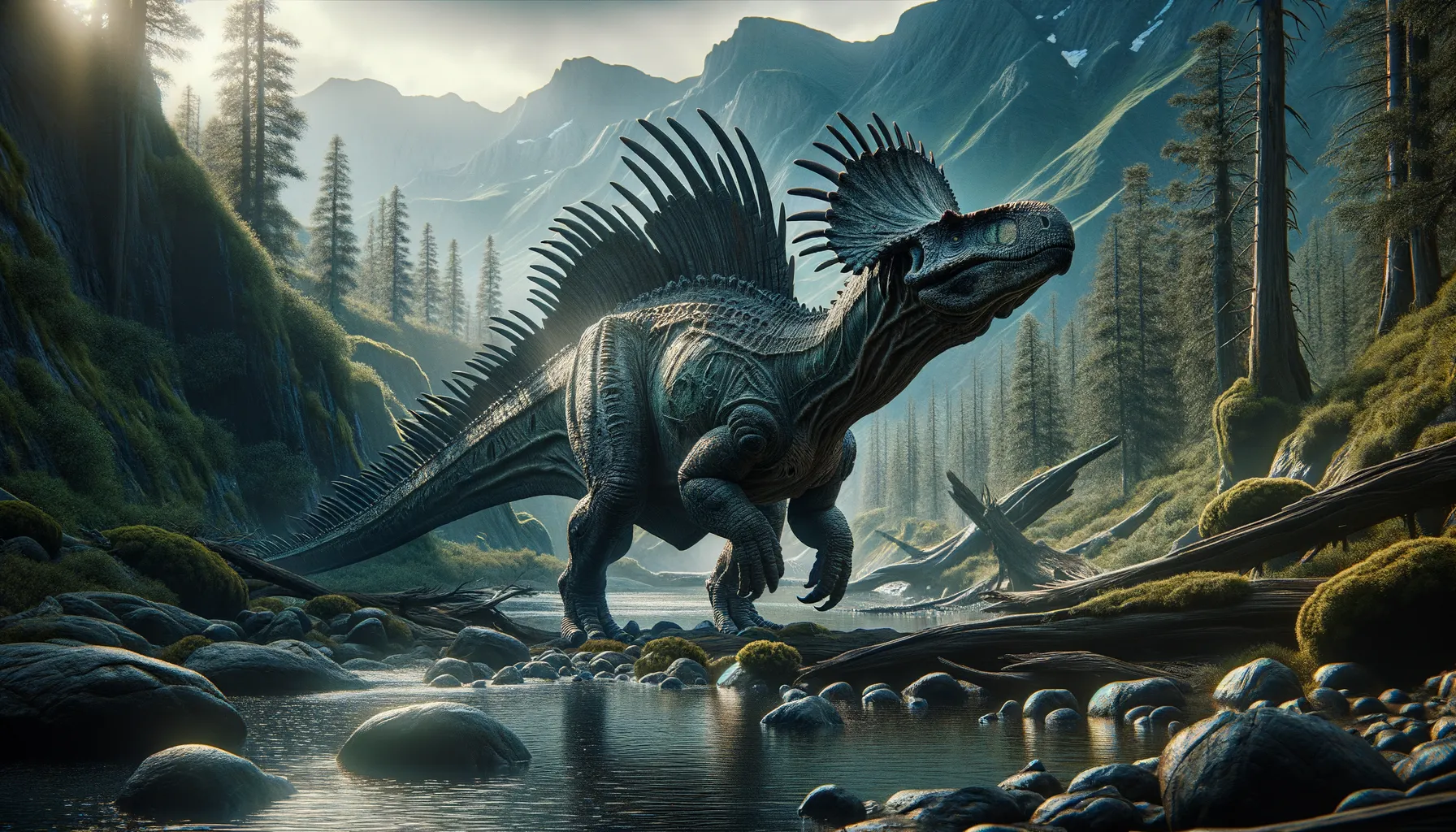
Ahshislepelta
Mighty armor with a powerful tail!
Period
Cretaceous
Length
Roughly 5 meters long.
Height
Approximately 1.5 meters tall.
Weight
Estimated to weigh around 2 tons.
Ahshislepelta was a heavily armored ankylosaurid dinosaur that roamed North America during the Late Cretaceous period. Known for its protective bony armor and club-like tail, it was well-adapted to defend itself against predators. Its remains were first found in New Mexico, revealing insights into the diverse dinosaur fauna of the region.
Diet
Ahshislepelta was a herbivore, primarily feeding on low-lying plants. Its broad, beaked mouth was well-suited to cropping tough vegetation.
Hunting
As a herbivore, Ahshislepelta did not hunt prey. It likely spent much of its time foraging and processing plant material with its simple yet effective teeth.
Environmental challenges
Ahshislepelta lived in a dynamic environment that was subject to climatic changes and habitat shifts. It had to cope with periods of drought, which would have affected the availability of plant resources. Predation by larger theropod dinosaurs also posed a significant threat, necessitating its defensive adaptations.
Speed
Considered slow due to its heavy armor.
Lifespan
Estimated to be around 50 to 70 years.
First discovery
Discovered in the San Juan Basin, New Mexico.
Fun Facts
- Ahshislepelta was a small, herbivorous dinosaur from the Late Cretaceous period, about 76 million years ago.
- Its name means 'Ahshis shield,' referring to its armored body and proximity to the Ah-shi-sle-pah Wilderness in New Mexico where it was discovered.
- Ahshislepelta belonged to a group called ankylosaurs, known for their heavy body armor and club-like tails.
- Despite its tough exterior, this dinosaur was relatively small, estimated to be around 13 feet long.
- The armor of Ahshislepelta was composed of large bony plates, which likely served as protection against predators.
- Fossils of Ahshislepelta were first described in 2011 after being unearthed in New Mexico.
- Ahshislepelta's ankylosaur lineage suggests it shared a distant relationship with the well-known Ankylosaurus.
Growth and Development
Ahshislepelta likely had a slow growth rate, typical of large herbivorous dinosaurs. Juveniles may have been more vulnerable to predation until they developed their full armor. Fossil evidence suggests that they experienced stages of rapid growth during favorable conditions.
Habitat
It inhabited a subtropical environment with diverse flora and fauna, likely consisting of floodplains and forested areas. The region provided abundant plant life, necessary for a large herbivore. Seasonal changes in the environment would have influenced its feeding and reproductive patterns.
Interaction with other species
Ahshislepelta shared its habitat with a variety of dinosaur species including predatory theropods. The presence of its bony armor indicates interactions with these predators, requiring defense mechanisms. It may have also competed with other herbivores for food resources.
Natural lifespan
Its natural lifespan could have been up to 70 years.
Reproduction
Ahshislepelta likely laid eggs as part of its reproductive cycle. Nesting areas might have been selected for safety and proximity to food resources. Parental care, if present, could have involved guarding nests from predators.
Social behaviour
Ahshislepelta may have lived in small groups or solitary as protection against predators was provided by its physical armor. Social interactions could have been limited, with communication primarily for mating or alerting to danger.
Fossil locations
Fossils of Ahshislepelta have been discovered in the San Juan Basin, New Mexico. These finds have provided significant evidence about the ankylosaurid's structure and living conditions. Further excavations may uncover additional locations with potential sites in nearby regions of North America.
